Syllables/Spelling Patterns -> syllables
Syllables
A syllable is a unit of sound in a word, represented by a single vowel sound or a vowel and one or more consonant sounds. Understanding syllables is important for reading and spelling, as it helps with word recognition and pronunciation.
Identifying Syllables
To identify the number of syllables in a word, you can use the following techniques:
- Clap Method: Clap your hands each time you hear a vowel sound in the word. Each clap represents a syllable.
- Vowel Counting: Count the number of vowels in the word. Each vowel sound usually represents a syllable.
- Word Division: Look for prefixes, suffixes, and root words to help identify syllables.
Types of Syllables
There are different types of syllables based on their structure and sound:
- Closed Syllable: A syllable that ends with a consonant, resulting in a short vowel sound (e.g., "cat", "sit").
- Open Syllable: A syllable that ends with a vowel, resulting in a long vowel sound (e.g., "go", "she").
- Vowel-Consonant-e Syllable: A syllable that contains a long vowel sound followed by a consonant and a silent "e" (e.g., "hope", "time").
- R-Controlled Syllable: A syllable where the vowel is followed by the letter "r" and makes a unique sound (e.g., "car", "bird").
Study Guide
Here are some tips to help you study and practice syllables:
- Practice clapping out the syllables in different words to get a feel for the concept.
- Use flashcards with words on one side and the corresponding number of syllables on the other side.
- Read aloud and listen for the syllables in words, paying attention to vowel sounds and word divisions.
- Play word games or use online resources to reinforce your understanding of syllables.
Understanding syllables will improve your reading, pronunciation, and spelling skills. By mastering syllables, you'll become more confident in decoding and using words effectively.
[Syllables] Related Worksheets and Study Guides:
.◂English Language Arts Worksheets and Study Guides Fourth Grade. Syllables/Spelling Patterns
Study Guide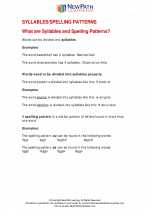 Syllables/Spelling Patterns
Syllables/Spelling Patterns  Activity Lesson
Activity Lesson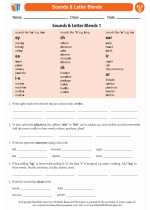 Sounds & Letter Blends
Sounds & Letter Blends  Worksheet/Answer key
Worksheet/Answer key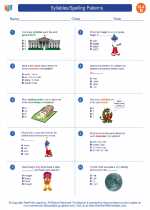 Syllables/Spelling Patterns
Syllables/Spelling Patterns  Worksheet/Answer key
Worksheet/Answer key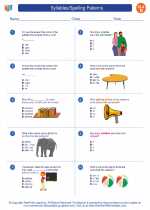 Syllables/Spelling Patterns
Syllables/Spelling Patterns  Worksheet/Answer key
Worksheet/Answer key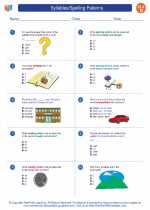 Syllables/Spelling Patterns
Syllables/Spelling Patterns  Worksheet/Answer key
Worksheet/Answer key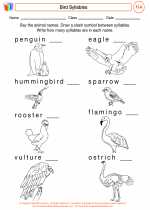 Bird Syllables
Bird Syllables 

 Activity Lesson
Activity Lesson
 Worksheet/Answer key
Worksheet/Answer key
 Worksheet/Answer key
Worksheet/Answer key
 Worksheet/Answer key
Worksheet/Answer key
 Worksheet/Answer key
Worksheet/Answer key

The resources above cover the following skills:
Students apply knowledge of language structure, language conventions (e.g., spelling and punctuation), media techniques, figurative language, and genre to create, critique, and discuss print and nonprint texts. (NCTE)